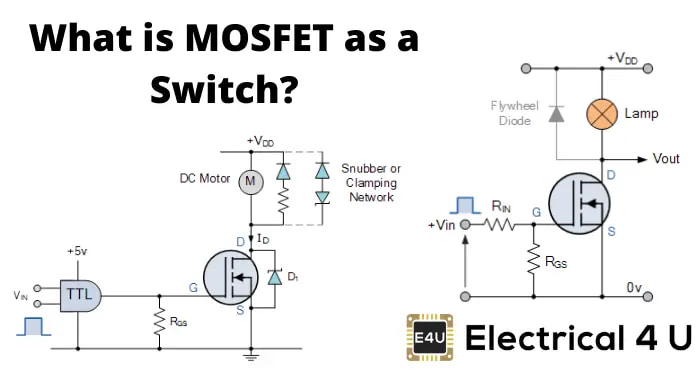Understanding MOSFET Switch Fundamentals
 Metal-Oxide-Semiconductor Field-Effect Transistors (MOSFETs) have revolutionized modern electronics by providing an efficient and reliable switching solution. As a leading supplier of high-quality MOSFETs, we’ll guide you through everything you need to know about using these versatile components as switches.
Metal-Oxide-Semiconductor Field-Effect Transistors (MOSFETs) have revolutionized modern electronics by providing an efficient and reliable switching solution. As a leading supplier of high-quality MOSFETs, we’ll guide you through everything you need to know about using these versatile components as switches.
Basic Operating Principles
MOSFETs operate as voltage-controlled switches, offering several advantages over traditional mechanical switches and other semiconductor devices:
- Fast switching speeds (nanosecond range)
- Low on-state resistance (RDS(on))
- Minimal power consumption in static states
- No mechanical wear and tear
MOSFET Switch Operating Modes and Characteristics
Key Operating Regions
| Operating Region | VGS Condition | Switching State | Application |
|---|---|---|---|
| Cut-off Region | VGS < VTH | OFF State | Open circuit operation |
| Linear/Triode Region | VGS > VTH | ON State | Switching applications |
| Saturation Region | VGS >> VTH | Fully Enhanced | Optimal switching condition |
Critical Parameters for Switch Applications
- RDS(on): On-state drain-source resistance
- VGS(th): Gate threshold voltage
- ID(max): Maximum drain current
- VDS(max): Maximum drain-source voltage
Practical Implementation Guidelines
Gate Drive Requirements
Proper gate driving is crucial for optimal MOSFET switching performance. Consider these essential factors:
- Gate voltage requirements (typically 10-12V for full enhancement)
- Gate charge characteristics
- Switching speed requirements
- Gate resistance selection
Protection Circuits
Implement these protective measures to ensure reliable operation:
- Gate-source protection
- Zener diode for overvoltage protection
- Gate resistor for current limiting
- Drain-source protection
- Snubber circuits for voltage spikes
- Freewheeling diodes for inductive loads
Application-Specific Considerations
Power Supply Applications
In switch-mode power supplies (SMPS), MOSFETs serve as primary switching elements. Key considerations include:
- High-frequency operation capability
- Low RDS(on) for improved efficiency
- Fast switching characteristics
- Thermal management requirements
Motor Control Applications
For motor driving applications, consider these factors:
- Current handling capability
- Reverse voltage protection
- Switching frequency requirements
- Heat dissipation considerations
Troubleshooting and Performance Optimization
Common Issues and Solutions
| Issue | Possible Causes | Solutions |
|---|---|---|
| High switching losses | Inadequate gate drive, poor layout | Optimize gate drive, improve PCB layout |
| Oscillations | Parasitic inductance, insufficient damping | Add gate resistance, use snubber circuits |
| Thermal runaway | Inadequate cooling, high switching frequency | Improve thermal management, reduce switching frequency |
Performance Optimization Tips
- Optimize PCB layout for minimal parasitic effects
- Select appropriate gate drive circuitry
- Implement effective thermal management
- Use proper protection circuits
Why Choose Our MOSFETs?
- Industry-leading RDS(on) specifications
- Comprehensive technical support
- Reliable supply chain
- Competitive pricing
Future Trends and Developments
Stay ahead of the curve with these emerging MOSFET technologies:
- Wide bandgap semiconductors (SiC, GaN)
- Advanced packaging technologies
- Improved thermal management solutions
- Integration with smart driving circuits
Need Professional Guidance?
Our team of experts is ready to help you select the perfect MOSFET solution for your application. Contact us for personalized assistance and technical support.
























